Green infrastructure gets creative: where power meets sustainability
Can a solar array look sensational or a tidal lagoon educate as well as generate green power? We explore key examples of green infrastructure across the globe
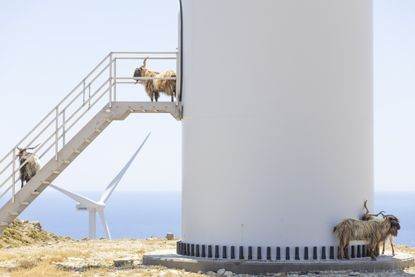
Acres of silicone glister in the sun; vast blades of fibreglass scythe the sky; turbines moil in the oceans: billions are being invested in renewable energy schemes around the world as awareness of the climate emergency finally dawns and the energy crisis bites. But architects and planners are now upping the ante, striving to create benefits beyond eco-power production for this green infrastructure. ‘We need to ask: how could this project work harder and bring delight?' says Alister Kratt, energy and infrastructure specialist at UK-based LDA Design. ‘We need to be creative and optimistic. Can we incorporate social and sporting space, research facilities or food production?’
Spain is pioneering in agrivoltaics: a project in Totana is harvesting power from the sun along with artichokes and thyme on dual-use land. Austria’s hydroelectricity plants are visitor attractions: you can trek through alpine waterfalls before zooming 600m down the face of the Schlegeis dam on a zipwire. In Iceland, aesthetics triumph. ‘We were trying to create a timeless design,' explains architect Pálmar Kristmundsson of his geothermal Borholuhús plants. ‘And we asked: why can’t it be beautiful as well as functional?' And at Norway’s Øvre Forsland hydropower plant it’s all about the setting: ‘We wanted it to live together with nature instead of destroying it,’ architect Stein Hamre tells us. ‘It should be inspiring and fascinating instead of it being an irritation.' Looking at these projects, we heartily agree.
Inspiring examples of green infrastructureRiver: Norway’s Øvre Forsland
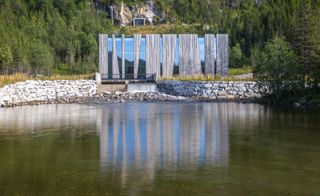
Found just south of the Arctic Circle amid snow-topped mountains and alpine forests, this hydropower station reflects the raw wilderness of northern Scandinavia. Stein Hamre Architects riff on spruce trees with an exterior of irregular wooden shards, while the interior is designed to inspire: hikers can peek inside to witness its technical wizardry bathed in multicoloured light. Meanwhile, this station powers some 1,700 homes.
Geothermal: Iceland’s Borholuhús

When Reykjavik’s ageing wooden geothermal stations started to fall apart, the city launched a competition, in 1996, to find sturdier replacements. Enter Pálmar Kristmundsson with a sleek retro-futuristic design: a clear winner comprising a pair of steel curvilinear walls and standing 4.5m tall, with a footprint of just 14 sq m. Eight of these beautiful plants now sit atop the city’s hot-water wells, pumping 70-90°C water to heat homes across town.
Tide: Wales’ Blue Eden

Floating eco-homes, a 320MW tidal lagoon and thousands of new jobs: Swansea’s proposed Blue Eden project hardly lacks ambition. Led by DST Innovations, the £1.7bn scheme also features research and cultural spaces, a vast data centre and battery manufacturing. If work starts in 2023 as hoped, it could be a game-changer for Wales: the country’s 800-mile coastline and 4m tidal ranges make it a potential tidal powerhouse.
Wind: Greece’s Agios Georgios
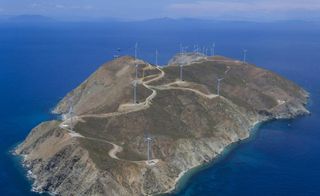
Wind turbines are often criticised for marring the landscape, but this Greek scheme challenges the naysayers. Terna Energy chose the uninhabited islet of Agios Georgios, just south of Athens, for this ‘onshore-offshore’ scheme, landing €150m in funding in an economic crisis, and securing planning permission amid the red-tape tangle of 28 government departments. The windfarm’s 23 turbines muster enough green energy for 40,000 homes.
Solar: United Arab Emirates’ Mohammed bin Rashid Al Maktoum Solar Park
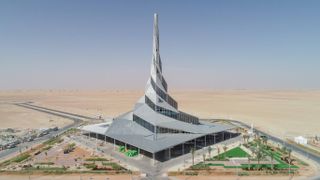
Could this be the future? Autonomous bus tours at this UAE solar park take in a solar power-generating road, a self-cleaning solar flower, ‘smart shades’ that resemble giant mushrooms and an innovation centre bristling with research and education space. Situated 50km south of Dubai, the park plans to boast a whopping 5,000MW production capacity by 2030, speeding the city to its 2050 net-zero carbon emissions target.
Wallpaper* Newsletter
Receive our daily digest of inspiration, escapism and design stories from around the world direct to your inbox
-
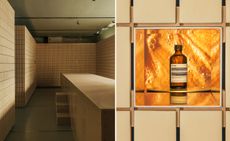 Aesop’s Salone del Mobile 2024 installations in Milan are multisensory experiences
Aesop’s Salone del Mobile 2024 installations in Milan are multisensory experiencesAesop has partnered with Salone del Mobile to launch a series of installations across Milan, tapping into sight, touch, taste, and scent
By Hannah Tindle Published
-
 Dial into the Boring Phone and more smartphone alternatives
Dial into the Boring Phone and more smartphone alternativesFrom the deliberately dull new Boring Phone to Honor’s latest hook-up with Porsche, a host of new devices that do the phone thing slightly differently
By Jonathan Bell Published
-
 Berlinde De Bruyckere’s angels without faces touch down in Venice church
Berlinde De Bruyckere’s angels without faces touch down in Venice churchBelgian artist Berlinde De Bruyckere’s recent archangel sculptures occupy the 16th-century white marble Abbazia di San Giorgio Maggiore for the Venice Biennale 2024
By Osman Can Yerebakan Published
-
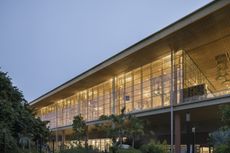 Sustainable architecture: innovative and inspiring building design
Sustainable architecture: innovative and inspiring building designThis is sustainable architecture at its best: from amazing abodes to centres of care and hard-working offices, these buildings not only look good but also do good
By Ellie Stathaki Published
-
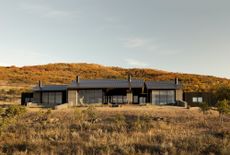 Slot House sets a high bar for sustainable architecture in Utah
Slot House sets a high bar for sustainable architecture in UtahSlot House, an energy-efficient mountain retreat in Utah, by local practice Klima Architecture, sets the bar high
By Eva Hagberg Published
-
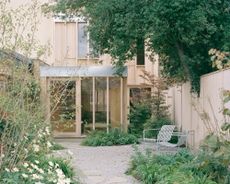 Spruce house offers a minimalist take on sustainable architecture
Spruce house offers a minimalist take on sustainable architectureSpruce House, London practice Ao-ft’s debut project, is a carefully crafted timber house that perfectly slots into its urban landscape
By Ellie Stathaki Published
-
 Material Cultures workshops support shift towards sustainable building practices
Material Cultures workshops support shift towards sustainable building practicesMaterial Cultures workshops explore new approaches to promote sustainability in the construction industry
By Ellie Stathaki Published
-
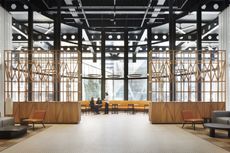 London's Exchange House gets a sustainable revamp
London's Exchange House gets a sustainable revampLondon's iconic Exchange House in Broadgate has been transformed for the 21st century by Piercy&Company
By Nana Ama Owusu-Ansah Published
-
 Is ProxyAddress architecture’s answer to solving homelessness?
Is ProxyAddress architecture’s answer to solving homelessness?ProxyAddress founder Chris Hildrey talks to us about architecture changing the world, and his pioneering initiative to help solve homelessness
By Ellie Stathaki Published
-
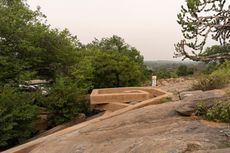 Vinu Daniel on the glory of garbage in architecture and Chuzhi House
Vinu Daniel on the glory of garbage in architecture and Chuzhi HouseWith an ethos of reuse and local sourcing, architect Vinu Daniel of Wallmakers is rewriting the rulebook for sustainable architecture and wins Best Earth Builder at the Wallpaper* Design Awards 2023
By Vaishnavi Nayel Talawadekar Published
-
 Hive Earth leads the charge in contemporary building with earth
Hive Earth leads the charge in contemporary building with earthHive Earth from Ghana is part of our series of profiles of architects, spatial designers and builders shaping West Africa's architectural future
By Ellie Stathaki Published